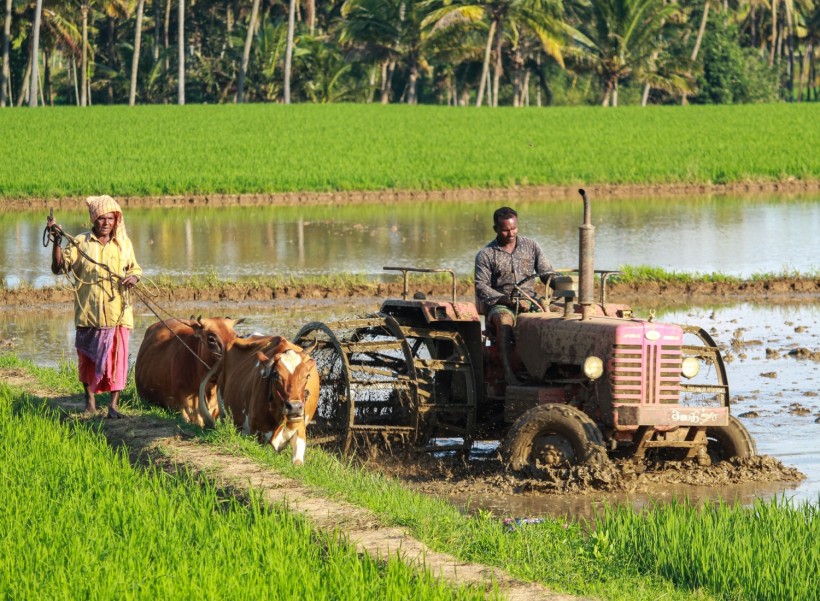Climate change is becoming increasingly worrisome for people around the globe, and its effects are seen anywhere you care to take a look. Glacial melting in the Arctic, rising CO2 levels in the atmosphere, and unpredictable weather events point to large-scale changes in our planet's climate patterns. These patterns are causing many industries to adopt new practices that either help deal with the effects of climate change or actively battle against it.
One economic sector in the US that is witnessing the negative effects of climate change is the agricultural industry, which, along with related industries, contributed $1.055 trillion to the US GDP in 2020. This massive industry plays an important role in food availability within the country and around the world. Since agriculture is directly affected by weather conditions, it is most susceptible to the harm that is caused by a changing planet.
So how is climate change hurting this industry in the US, and what does it look like for farmers who deal with the ramifications on a daily basis?
Increased heat waves
Every summer in the US, increasingly difficult heat waves have hurt crop yields, livestock, and farmers themselves. Soaring temperatures create a higher need for water and soil nutrients, raising expenditures for farms across the country. Additionally, intense heat can create unsafe working conditions in an industry where most workers are spending long hours outside, which can lead to injuries or death. In these cases, workers may be turning to farm accident injury attorneys when they have no other options. Rising temperatures increase the risks of an already dangerous line of work for many. As climate change continues and heat waves become more intense every year, the agricultural industry could face a workforce crisis as working conditions become more dangerous in the summer months.
Worsening yearly droughts
This is especially true on the western side of the US, particularly in California. Droughts can ruin an entire harvesting season for farmers and hurt their livestock populations when water becomes scarce. 2021 saw one of the worst years for cattle in California, a state that produces livestock at a very high rate. Ranchers have to lower the number of livestock due to repeated dry seasons that result from climate change, cutting into their profits and hurting their ability to continue production. Livestock across the US consume a huge amount of water, and sustaining this number of animals places high demands on the local water supply. When droughts come along year after year, creating dry conditions, ranchers simply cannot keep up their usual numbers.
Expensive to go green
As many industries transition towards environmentally friendly practices, many farmers are finding the transition to be too expensive. Small farms, which make up a large percentage of the industry as a whole, often struggle to find the workers to maintain production, as many workers see it as a difficult job. On top of having to do their own accounting, hiring, labor, and other operational processes, small farms simply lack the funds and manpower to implement sustainable farming practices with new equipment and materials. This is why so many struggle to make the initial switch to environmentally friendly farming. In the long run, the inability to adapt could compound the other issues that climate change has created for farmers across the US like higher temperatures and frequent droughts.
Where does this leave farmers?
As a significant part of the food production in the US, the job of farmers is crucial to the economy. It is an industry that must be protected at all costs to preserve its vital role in feeding the country and much of the world. Farming itself is a demanding, difficult, and at times, dangerous occupation for its workers.
The best way forward is to learn and adapt. We know that droughts and heat waves will continue, so continued research into farming practices that will protect workers, livestock, and crops in the midst of these conditions is a necessity for the future of farming. Additionally, adopting new practices and technologies that can improve the agricultural industry and farming operations can help alleviate the environmental and economic effects of climate change on this sector.
Whatever path is taken must be one that assists farmers dealing with these issues every day as they navigate unpredictable weather conditions and a changing planet.
© 2024 NatureWorldNews.com All rights reserved. Do not reproduce without permission.
* This is a contributed article and this content does not necessarily represent the views of natureworldnews.com



![Plastic Pollution: Scientists Include Spores of Plastic-Eating Bacteria ‘Bacillus Subtilis’ to Develop 'Self-Digesting Plastic' [Study]](https://1471793142.rsc.cdn77.org/data/thumbs/full/70396/280/157/50/40/plastic-pollution-scientists-include-spores-of-plastic-eating-bacteria-bacillus-subtilis-to-develop-self-digesting-plastic-study.jpg)


